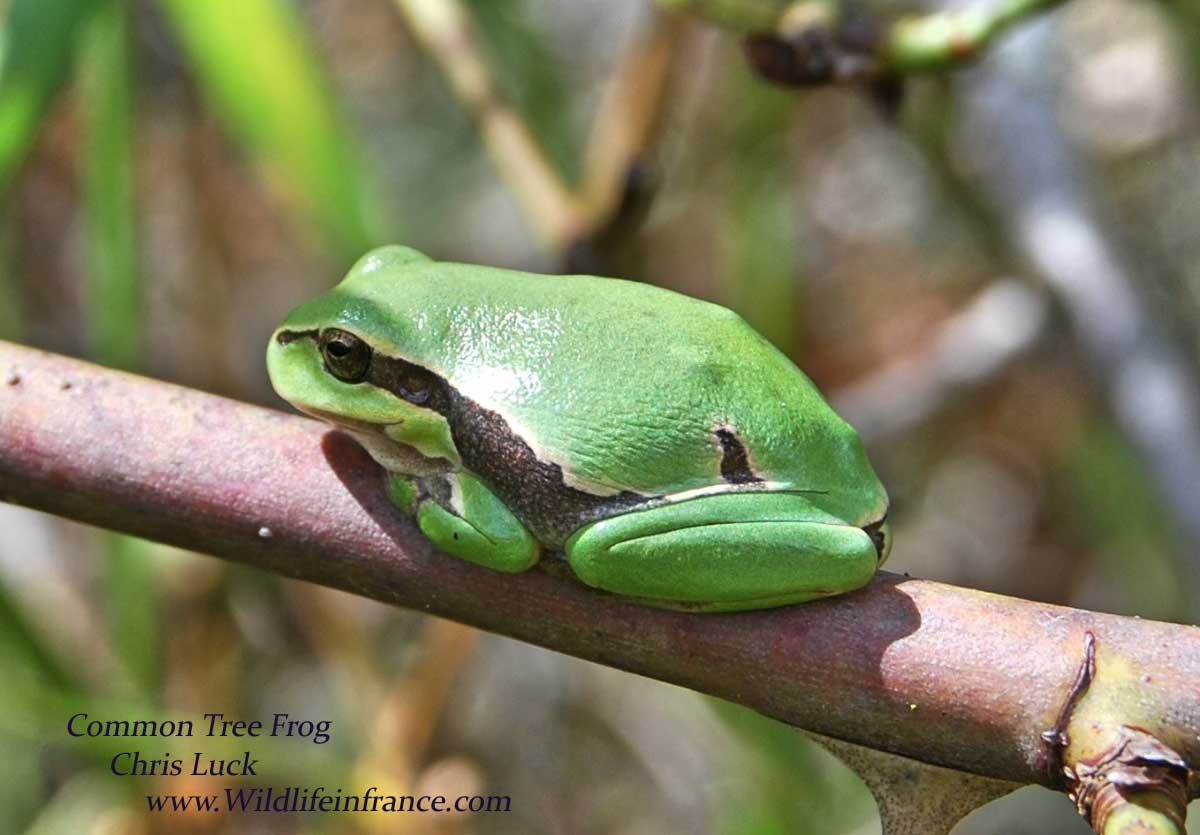Common tree frog
Hyla arborea
Rainette Arboricole
The common tree frog, like its cousin, the Stripeless Tree Frog, is different from other French frogs in that it has the possibility to climb in vegetation or indeed on almost any other structure by virtue of adhesive pads on the ends of its digits.
The common tree frog can be found in most areas of France except the south, (see map) where they make use of a large range of habitats rarely descending to the ground as they tend to spend their time in bushes and small trees where their presence is often made evident by their loud singing. This is more rapid than the Stripeless Tree Frog and can be heard from April until early summer and again at the end of summer into autumn. Average size is about 4cm with a maximum of 5cm.
Generally nocturnal, but not exclusively so, they eat insects which they catch with their projectile tongue, these being often taken on the wing. They will frequently move into deep wells and other subterranean cavities when conditions are particularly hot or dry. Hibernation takes place from October until March, although they will remain active during periods of milder weather.
Reproduction: The males arrive first at ponds, lakes, ditches and slow moving rivers in April where each individual creates a territory of around 6 metres diameter which it defends. When night falls the singing starts to attract and guide a female to their position. Eggs are laid in the water in smallish packets, perhaps as many as 50, over a number of days and number between 800 & 1900 eggs per female in total. These float on top of the water and hatch in about two weeks. Metamorphosis takes place after three months when the young leave the water and then remain land dwellers for at least another three months.





